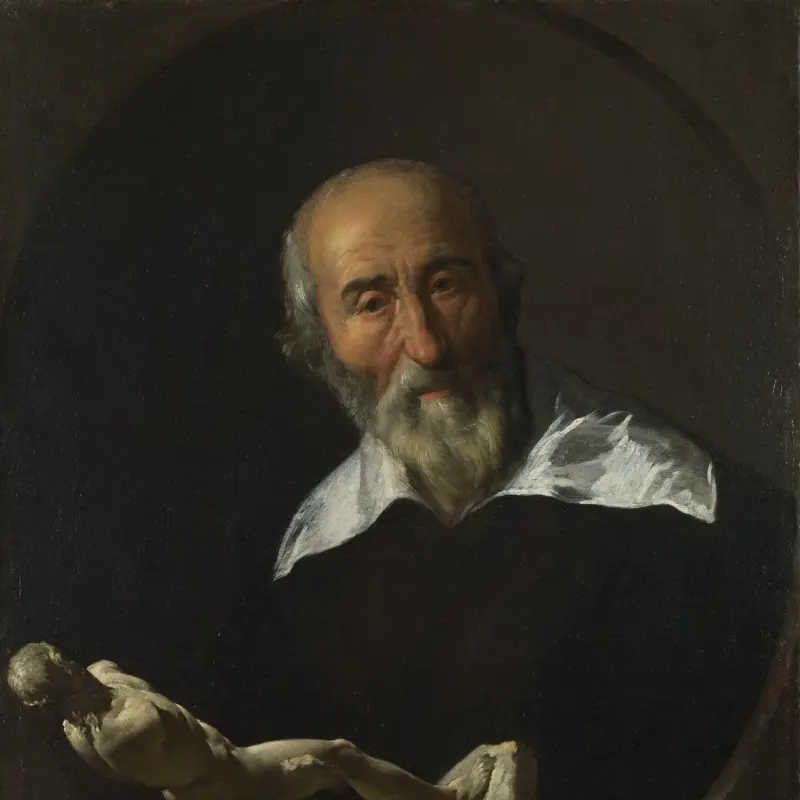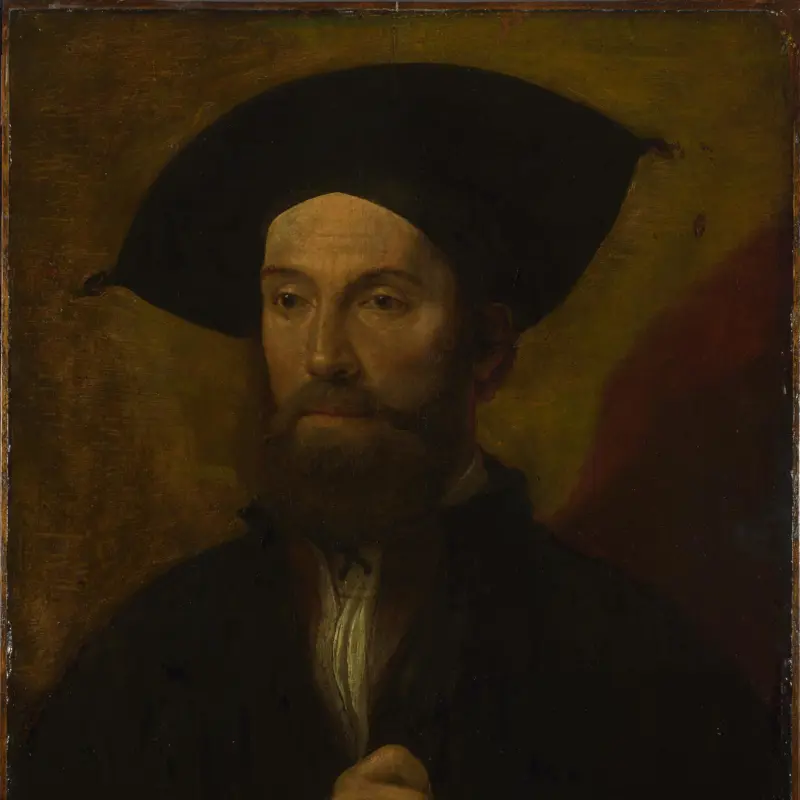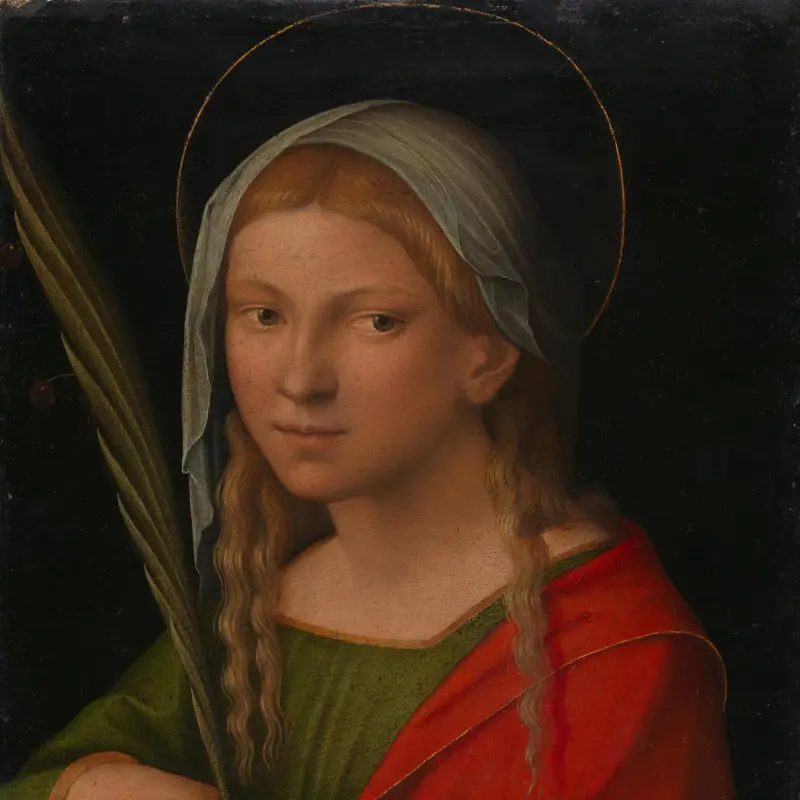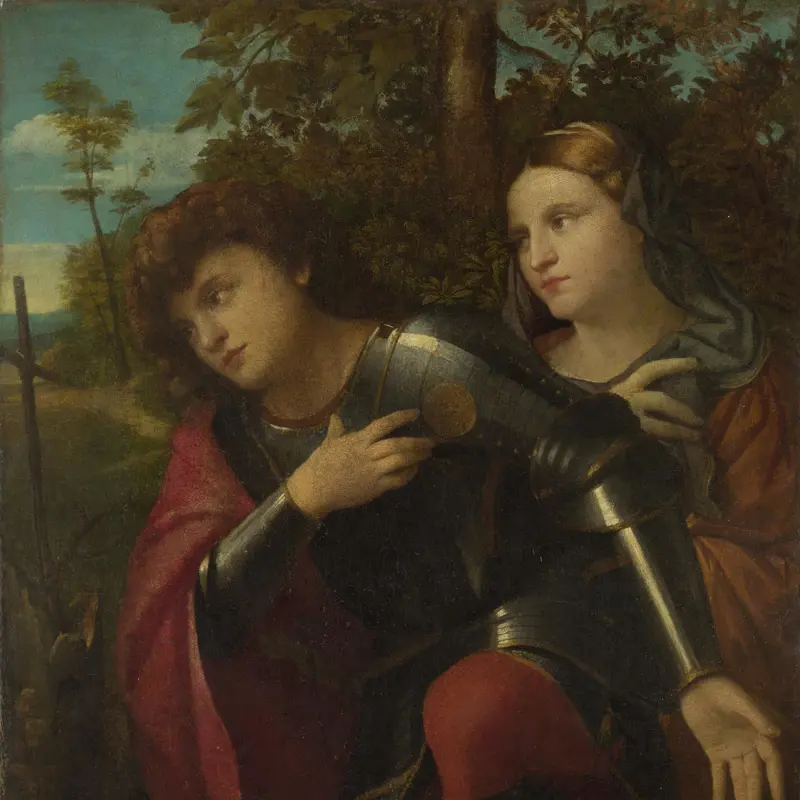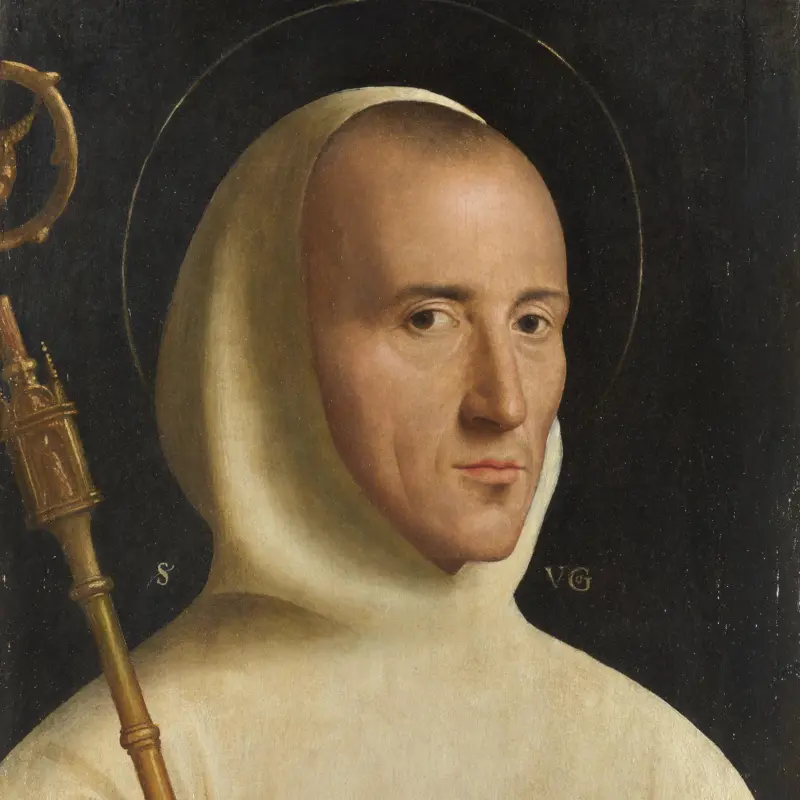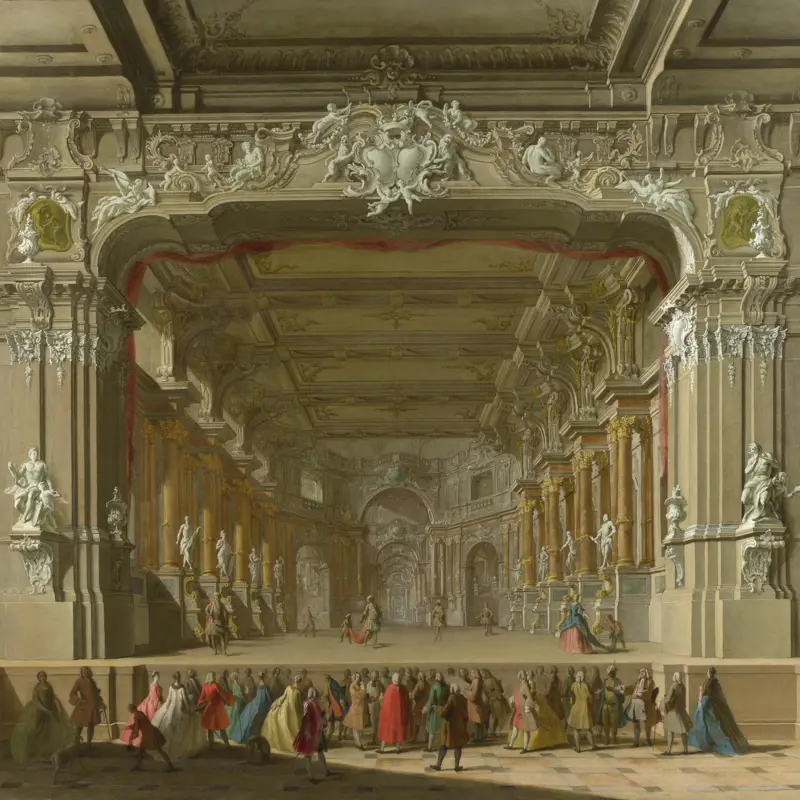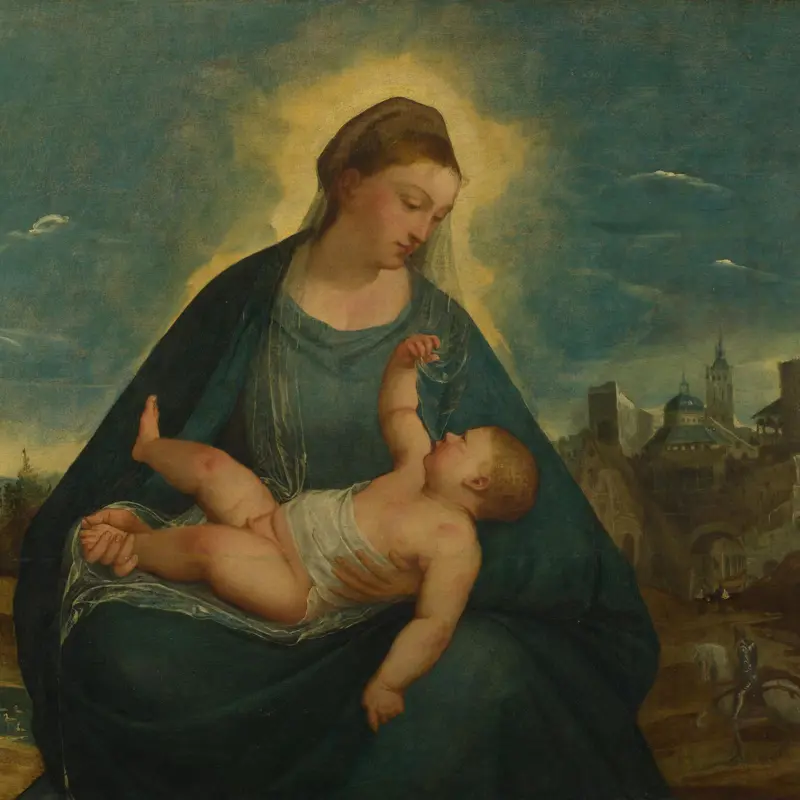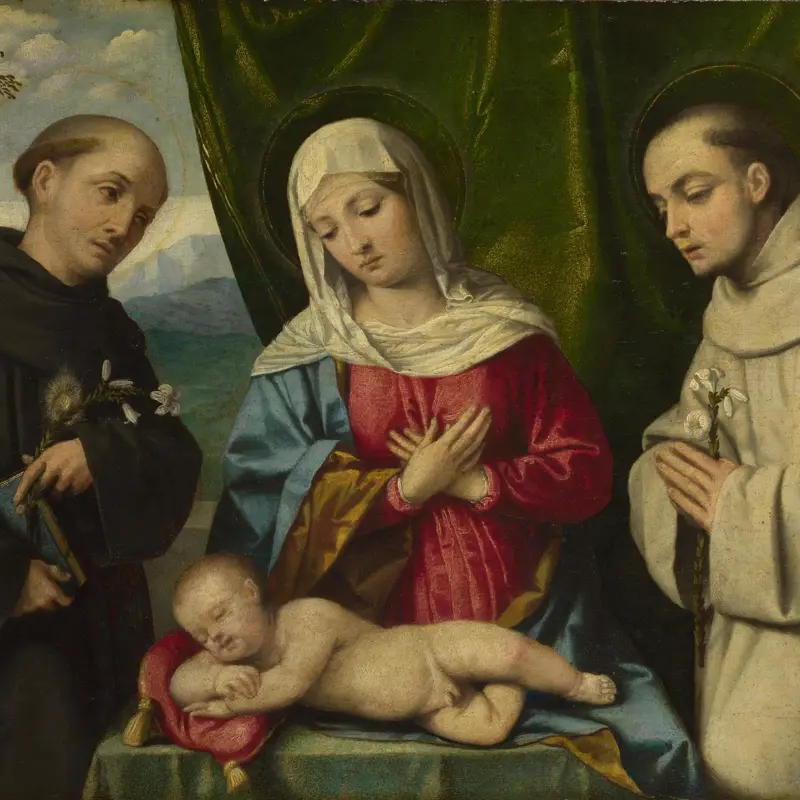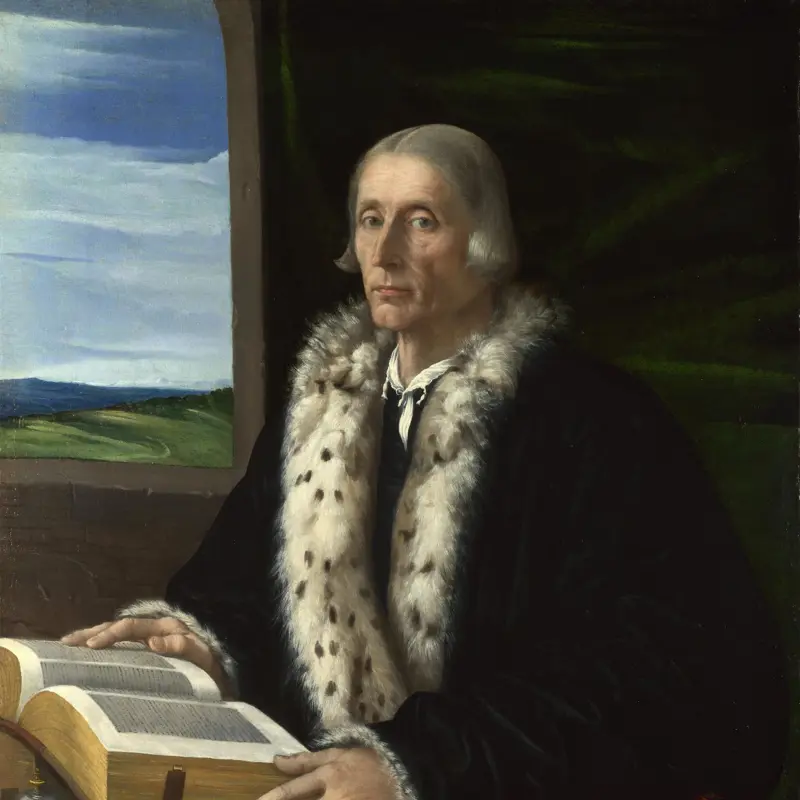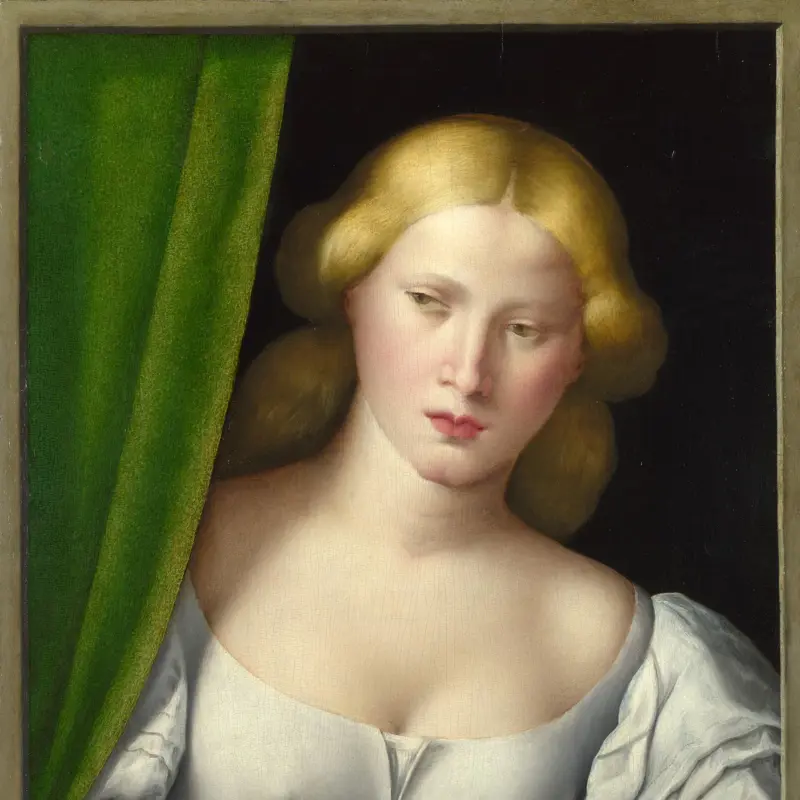Italian, North, 'Three Men and a Little Girl', about 1540
About the work
Overview
The people in this group portrait have not been identified, but they may be from Venice as the dress of the men is Venetian in style. The child’s costume, which is recognisably that of a girl, can be dated to around 1540.
The central man – probably the girl’s father – holds her protectively in his arms. He looks directly at us, his right hand apparently pointing at something beyond the right edge of the painting. It is very rare in sixteenth-century Italian portraiture to find a female child included among an all-male group. It is possible that this portrait was originally a larger family portrait that was cut down and adapted over time.
The fusion of North Italian and Netherlandish style and technique suggests the picture may be by a North Italian painter influenced by Netherlandish art.
Key facts
Details
- Full title
- Three Men and a Little Girl
- Artist
- Italian, North
- Date made
- about 1540
- Medium and support
- oil on canvas
- Dimensions
- 83.8 × 69.9 cm
- Acquisition credit
- Salting Bequest, 1910
- Inventory number
- NG2597
- Location
- Not on display
- Collection
- Main Collection
- Previous owners
Provenance
Additional information
Text extracted from the ‘Provenance’ section of the catalogue entry in Martin Davies, ‘National Gallery Catalogues: The Early Netherlandish School’, London 1987; for further information, see the full catalogue entry.
Bibliography
-
1945Davies, Martin, National Gallery Catalogues: Early Netherlandish School, London 1945
-
1955Davies, Martin, National Gallery Catalogues: Early Netherlandish School, 2nd edn (revised), London 1955
-
1987Davies, Martin, National Gallery Catalogues: The Early Netherlandish School, 3rd edn, London 1987
-
2001
C. Baker and T. Henry, The National Gallery: Complete Illustrated Catalogue, London 2001
About this record
If you know more about this work or have spotted an error, please contact us. Please note that exhibition histories are listed from 2009 onwards. Bibliographies may not be complete; more comprehensive information is available in the National Gallery Library.


